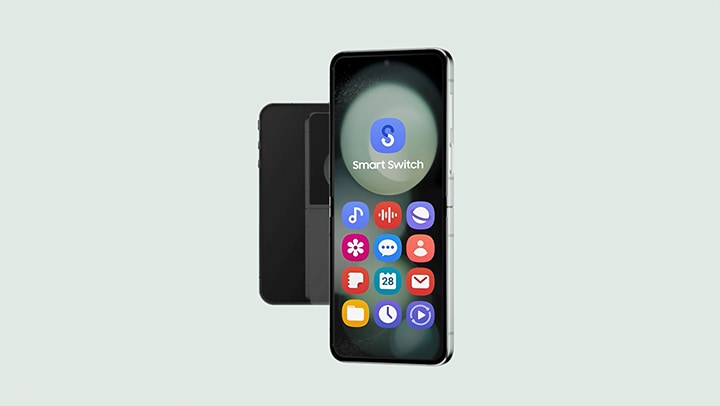To move a Samsung refrigerator, first, empty its contents and unplug it. Secure all loose parts and tilt the fridge slightly to roll on its wheels.
Relocating a Samsung refrigerator may seem intimidating, but it’s a task that can be smoothly executed with some planning and the right techniques. Careful preparation is key to ensuring both the safety of those moving the refrigerator and the appliance itself.
Before attempting to move your Samsung fridge, it is essential to consult the user manual for specific instructions, as some models may have particular requirements. Pre-move tasks include defrosting the freezer, disconnecting the water supply for models with an ice maker, and ensuring all shelves and drawers are removed or firmly secured. Remember, using an appliance dolly and securing the fridge with straps can minimize the risk of injury or damage. Moving a Samsung refrigerator involves strategic maneuvering and should always be done with at least one other person to distribute the weight evenly. This approach not only protects the appliance but also makes the process far more manageable for everyone involved.

Credit: www.samsung.com
Moving Your Samsung Refrigerator: Begin With Preparation
Relocating your Samsung Refrigerator calls for careful planning. A smooth move preserves the functionality of your appliance. Start by understanding the right steps for safe transportation.
Gather Necessary Supplies
Packing your refrigerator requires specific supplies for securing its components:
- Moving blankets – Provide cushioning for the surface.
- Durable tape – Keeps doors and cords in place.
- Dolly – Assists in a smooth move.
- Straps or ropes – Ensure the fridge stays on the dolly.
- Measuring tape – Confirms the path and doorway sizes.
Unplug And Defrost In Advance
Prepping your fridge starts with these steps:
- Unplug the unit at least 24 hours ahead.
- Clean and dry all surfaces to prevent mold.
- Secure internal components like shelves with tape.
Drying the unit prevents water damage during the move.

Credit: m.facebook.com
Protecting Your Appliance: Secure Internal Components
Before moving your Samsung refrigerator, protect it inside out. Secure internal parts to prevent damage during the move. This guide helps you ready your fridge for a safe relocation.
Remove And Wrap Shelves
Take out the shelves inside your fridge first. Each shelf can break if not handled with care. Use bubble wrap or soft blankets. Wrap shelves tightly to keep them safe.
- Slide out each shelf carefully.
- Wrap in bubble wrap or a blanket.
- Secure with tape to hold the wrap in place.
Stabilize Moving Parts
Your fridge has parts that can move. Secure these before you start. Use strong tape for stability. This prevents parts from shifting and causing damage.
- Tape down any loose wires or tubes.
- Secure drawers with tape or take them out.
- Check the manual for parts that need special care.
Safeguarding Your Space: Prevent Damage During The Move
Moving a Samsung refrigerator requires careful planning. Protect your floors, doorways, and walls to avoid costly repairs. Below are practical tips to secure your space during the move.
Floor Protection Strategies
Keep your floors scratch-free with the following:
- Use furniture sliders: They help glide heavy appliances smoothly.
- Lay down plywood sheets: These create a solid moving path.
- Roll out carpet film protector: This guards against dirt and scuffs.
Measure your refrigerator’s base to choose the right size protection.
Doorway And Wall Padding
Shield your home’s entryways and corridors with these methods:
- Install foam padding: It absorbs shocks and prevents dents.
- Wrap sharp corners: Bubble wrap reduces impact damage.
- Use corner guards: They protect against scrapes and chips.
Secure loose padding with painter’s tape to avoid wall marks.
Maneuvering Techniques: Handling A Bulky Refrigerator
Moving a hefty Samsung refrigerator can be a big task. Yet, the right techniques make it safer and easier. In this section, we explain the best ways to handle a bulky fridge.
Proper Lifting And Carrying
Lift with care: Before you start, empty your Samsung refrigerator. This makes it lighter. Ensure you and your helpers know how to lift correctly. Bend at the knees, not the back. Keep the fridge close to your body.
- Use appliance straps: Straps help you and your team lift the fridge without strain. They secure the refrigerator, making lifting safer.
- Move slowly: Take small steps. This stops you from tripping or dropping the refrigerator.
- Keep the fridge upright: Tilting can damage the cooling system. It’s best to keep it vertical.
Navigating Stairs And Tight Spaces
Plan your route: Measure doors and hallways before moving. Remove any obstacles.
- Stair-rolling techniques: If available, use a refrigerator dolly. Roll the fridge slowly down or up the stairs.
- Spotter role: Have a friend act as a spotter. They can guide you through tight spots.
- Angle wisely: Sometimes, you might need to tilt the fridge. Do it gently and never on its side.
Remember: Patience is key when moving a large appliance. Take breaks if needed.
Transportation Tips: Keeping The Fridge Safe On The Road
Moving a refrigerator requires careful planning and execution to ensure it arrives at your destination in perfect condition. Whether transporting your Samsung fridge to a new home or to a service center, the following tips will guarantee a safe journey for your appliance. Follow these strategies to avoid bumps and bruises along the road.
Securing The Refrigerator In A Vehicle
Ensuring your refrigerator is secure is a crucial step in transportation. To avoid movement and potential damage, follow these guidelines:
- Measure your fridge and vehicle to confirm fit.
- Empty the refrigerator completely, including all shelves and drawers.
- Defrost the freezer to prevent water damage.
- Use moving straps to tie the fridge down tightly.
- Keep the unit upright to protect the compressor.
- Place non-slip mats under the appliance.
- Balance weight evenly in the vehicle.
Using these steps, the refrigerator remains immobile, reducing risk on the road.
Controlling Temperature And Humidity
Controlling the internal environment of your appliance during transport is essential. Here’s what to consider:
- Maintain moderate temperatures in the vehicle.
- Use dehumidifiers if humidity levels are high.
- Keep doors slightly ajar for air circulation.
- Monitor conditions using a thermometer and hygrometer.
This control ensures that your Samsung refrigerator doesn’t suffer from condensation or mold, keeping it cool and dry throughout the journey.
Reinstallation Spot-on: Setting Up Your Samsung Fridge Post-move
Welcome to the final steps of relocating your Samsung refrigerator! You’ve moved your appliance with care. Now, let’s ensure it’s up and running in its new home. Get ready to chill as we guide you through leveling, positioning and reconnecting your fridge.
Leveling And Positioning
First things first, let’s position your Samsung fridge perfectly. A level fridge is a happy fridge. Here’s how to do it right:
- Place the fridge in its new spot, leaving space for ventilation.
- Use a level tool on top of the fridge to check for evenness.
- Adjust the legs or rollers by turning them clockwise or counter-clockwise.
- Double-check with the level tool for both side-to-side and front-to-back accuracy.
Reconnecting Water And Power
Now, let’s power up and water down:
- Locate the power outlet and water supply valve.
- Connect the refrigerator to the power outlet.
- Attach the water supply line to the fridge and valve.
- Turn on the water supply valve slowly; check for leaks.
- Power up your refrigerator and wait for it to cool.
Your Samsung fridge is now ready to keep your food fresh and your drinks cool! Enjoy your appliance in its new location.
Post-move Check-up: Ensuring Everything Is Working
Now that your Samsung refrigerator has made the move, it’s crucial to do a post-move check-up. This step makes sure your fridge is in tip-top shape after the relocation. Quick checks can save you from future troubles. Get ready to inspect and test!
Inspecting For Potential Damage
Begin with a thorough visual check. Look for scratches, dents or other harm that might have happened during the move. Focus on the following:
- Exterior surfaces: Check for any visible marks or dents.
- Doors: Make sure they open and close smoothly.
- Seals: The door seals should sit tightly against the frame.
If you find damage, write it down. Reach out to professionals for advice on possible fixes.
Testing Temperature And Controls
After a physical inspection, it’s time to ensure the fridge’s functions are in working order:
- Plug in your fridge and wait for it to start up.
- Set the temperature to the recommended settings.
- Monitor the temperature over the next 24 hours.
A stable temperature means your Samsung refrigerator is ready to use. If the temperature fluctuates, consult the user manual or call a technician.

Credit: www.amazon.com
Maintenance After The Move: Prolonging Your Refrigerator’s Lifespan
Relocating your Samsung refrigerator can be a hefty task, but the work doesn’t stop once you move. Proper maintenance ensures your appliance operates efficiently for years to come. Follow these essential after-move care tips to keep it in top shape.
Regular Cleaning And Upkeep
Cleanliness extends the life of your Samsung refrigerator. Dust and debris can impede performance. A consistent cleaning regimen prevents these issues.
- Wipe down surfaces inside and outside with a soft cloth and gentle cleaner.
- Remove shelves and bins every month for soaking and scrubbing.
- Clean door seals to ensure a tight closure and maintain temperature.
- Check and clean the coils at the refrigerator’s back or bottom regularly.
Scheduling Professional Inspections
Prompt inspections catch issues early. This limits repairs and secures longevity. Schedule professional service for your Samsung refrigerator.
| Inspection Item | Frequency |
|---|---|
| Overall appliance health check | Annually |
| Water filter replacement | Every six months |
| Seal integrity and efficiency test | Every two years |
| Diagnostic for strange noises or behaviors | As needed |
Frequently Asked Questions For How To Move Samsung Refrigerator
Does Samsung Refrigerator Have Wheels?
Yes, most Samsung refrigerators come equipped with wheels for easier movement and positioning during installation or cleaning.
How Do You Move The Wheels On A Samsung Refrigerator?
To move the wheels on a Samsung refrigerator, gently tilt the unit back and roll it to the desired location. Be sure to secure any loose items inside and guide the fridge smoothly to avoid floor damage. Always consult the user manual for model-specific instructions.
How Do I Move My Samsung Refrigerator To Clean Behind?
Unplug the refrigerator. Slide out the front leveling legs. Gently rock the fridge onto its wheels. Carefully move it forward to clean. Reverse steps to reposition.
How Do I Move My Refrigerator By Myself?
Empty the fridge and defrost it. Disconnect power and secure doors. Use an appliance dolly to transport. Carefully maneuver through doorways and over thresholds. Secure in moving vehicle with straps.
Conclusion
Relocating your Samsung refrigerator can be hassle-free with the right approach. Keep in mind the steps we’ve covered: prepare, empty, secure, move, and set up. As you follow the guidelines, your fridge will be up and running in its new space efficiently.
Remember, safety and proper handling are key to ensuring your appliance serves you well for years to come.

